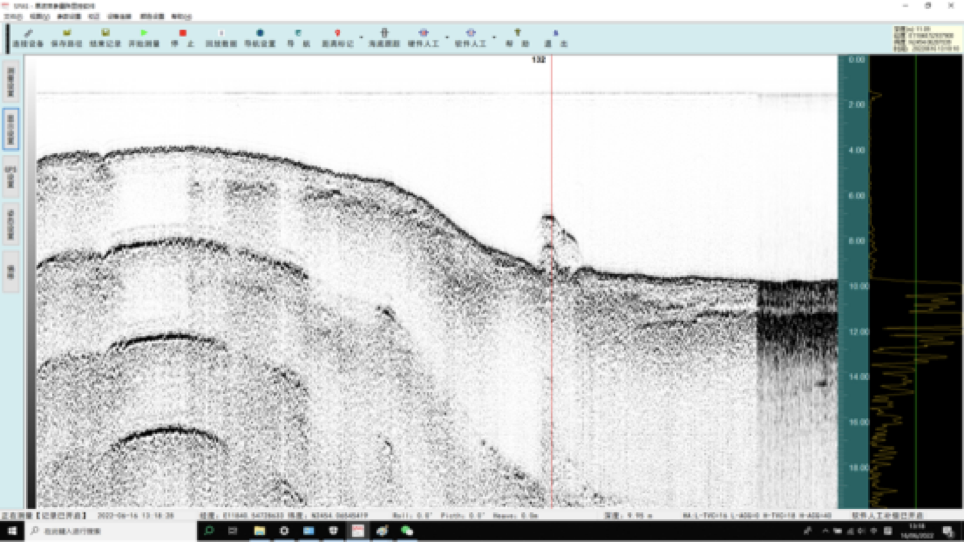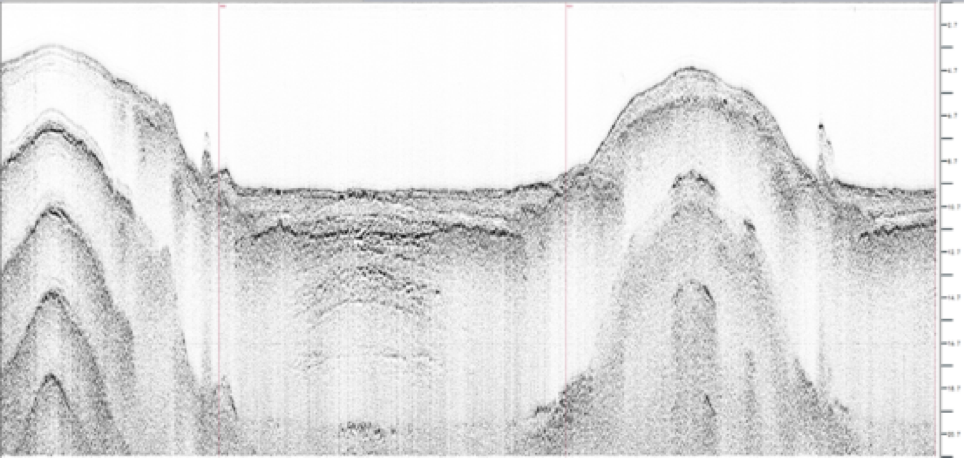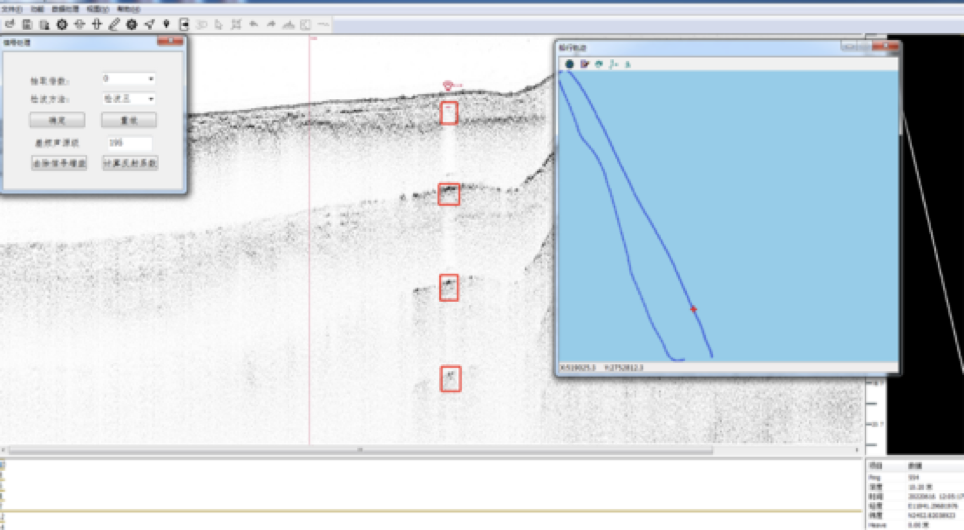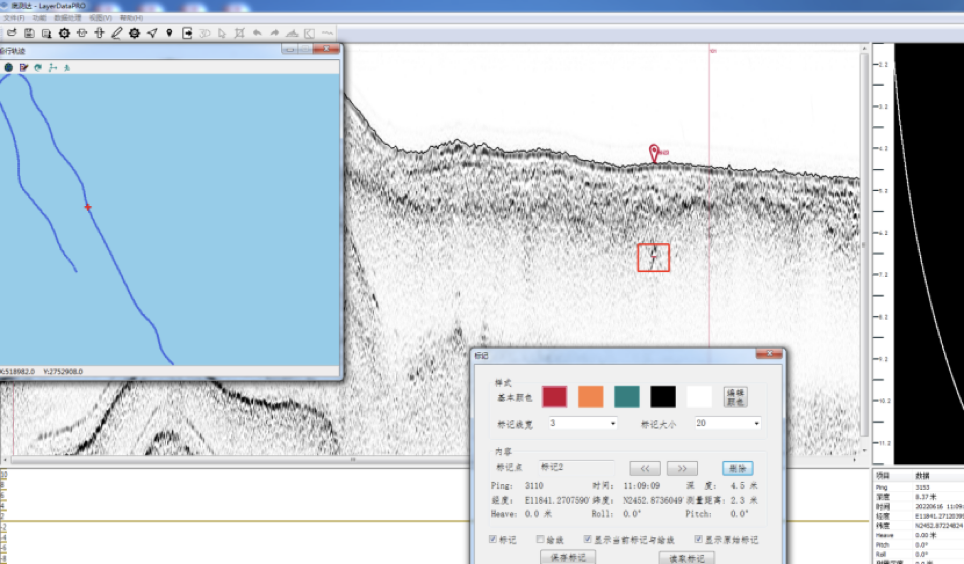Data Examples of Sewerage Line Detection by GeoScope 100
2022-07-26
Products:GeoScope 100 Surface
Date:June, 2022
Location:Sea Area near Xiamen
Water Depth:Approximately 5 metres of very shallow water
Detection target: tens of centimetres to one metre diameter sewage pipes buried at a depth of about 3.5m to 5m.
Difficulties of the project: very shallow water and large pipe depths

Data Examples:
The first mark from the left shows that only half of the arc is formed due to the slope blocking the acoustic wave from the dark tube.
Pipelines exposed on the seabed

Pipelines exposed on the seabed

Pipes with multiple echoes clearly visible

Water depth 4.5m, buried pipe about 2.3m deep

Water depth 6.1m, concealed pipe buried about 1.4m deep

On the left, the markers are tube cables found in secondary waves
On the right is the misalignment on the direct and multiple wave images due to non-perpendicular incidence
Project Summary:
Because of this case we did not understand the depth of very shallow water, so the use of 100kHz original frequency machine, in very shallow water depth, the use of 200kHz, 300kHz high frequency is often better, because the parametric effect of the formation of the distance is shorter, in favour of shallow water detection. High-frequency data floating mud silt stratification is obvious, but very shallow water depth with GeoScope 100 effect may be worse than the 200 effect, stronger reverberation, more multiple echoes, multiple wave coverage angle is greater, so some targets need to find the target within the secondary echo.
Regarding the formation distance of parametric effect, the situation of each sea area is different, probably related to the sound absorption and the sound Mach number, and the empirical value in muddy water can give a rough reference, we can roughly think that the formation distance of 100kHz primary frequency parametric effect is 15m, the 200kHz primary frequency parametric effect corresponds to 10m, and the formation distance of 300kHz parametric effect corresponds to 5m, just for the empirical rough reference.

